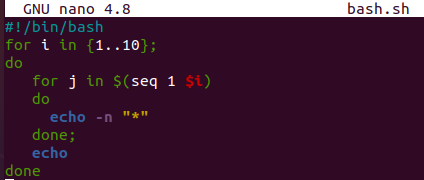Whenever we have been working on something, we tend to feel hectic after some time. Therefore, we need rest to recover ourselves or refresh the whole work mode. Just like that, sometimes our Linux system also requires sleep for a few seconds. It came up with the “sleep” function to make the processing of anything pause for a specified period. This sleep function can be utilized within the bash script and within the terminal shell to perform the same goal. Therefore, we have decided to discuss the sleep function in Ubuntu 20.04 Linux system. Let’s just get started with the login from an Ubuntu 20.04 system.After the login, you need to open Ubuntu’s terminal application as we have to perform the sleep command in it. To open it, try the “Ctrl+Alt+T” shortcut. If for some reason the shortcut doesn’t work for you, click on the “Activity” menu from the taskbar of Ubuntu’s desktop. The search bar will be opened. Click on the search area, write “terminal” and press the key “Enter”. The application will be shown on your screen. Click on the “terminal” application and it will be launched within no more than 5 seconds according to your system speed.
Example 01: Sleep for 1 Second
Let’s get started with a simple example of the sleep function in bash. Let’s say, you want to simply display a message “Testing…” on your terminal screen. You have to use the “echo” statement for this along with this message as per the below illustration in the image. After that, we tried the sleep function with the value “1” to make our system sleep or pause for 1 second. As 1 second is not a very long time, it will be quickly ended and the system will be restored. The output of the below-mentioned command is attached here.
$ sleep 1
The use of sleep can also be illustrated with the “read” statement of our Ubuntu 20.04 system without using the sleep function. Let’s say, we want a user to press Enter when it has been asked. Therefore, we have been using the “read” statement with the “-p” flag along with the message stating that the user must press Enter to proceed. After this command execution, the next line is showing the message “Press Enter to proceed” and makes this system still without doing anything. This looks like sleep and if the user doesn’t press Enter, it will continue to look like this. The output of the below-mentioned command is attached here.
Example 02: Sleep for More Than 1 Second
Let’s make our system sleep for more than 1 second to see the sleep process. Therefore, we have been trying the “sleep” command in the bash terminal with the value 10. It will make our system sleep for a total of 10 standard seconds. After the execution of this command by pressing the Enter key, our system went to sleep as per the below demonstration.
After a total of 10 seconds has been passed, the system came back to its original state and the control has been given to the next instruction as below.
The same thing can be achieved using the “read” command in the terminal. But, we have to make use of the “-t” flag with the specified number value to make our system pause for some time. Therefore, we have added the read statement with the “-p” flag taking the message “Sleep for 10 seconds” followed by the “-t” flag along with its value “10”. This “Read” statement will display the message mentioned in the command and make our system pause for 10 seconds. After running this execution, the message is now displayed and the system is paused as below.
After a total of 10 seconds have passed, our system returns to its processing state. Therefore, no more pause has been encountered after this and a new query area is generated. The output of the below-mentioned command is attached here.
Example 03:
Let’s take a new example to look at the bigger picture of sleep function in Linux. Thus, we have been creating a new bash file with the “.sh” extension named “sleep.sh” with the “touch” query. After its creation in the home folder, we need to open it in a “GNU Nano” editor to make code. Both the commands have been shown below.
$ nano sleep.sh
We have started our bash script with an echo statement telling us that the system will sleep for the next 10 seconds. The sleep function is used in the next line to pause the execution of this program for 10 seconds. After the 10 second sleep, the next echo statement will be executed showing that our system will sleep for 15 seconds. The sleep function will be executed once again. The system will be paused for 15 seconds and the last echo statement gets executed.
We have executed our bash file and the first echo statement has been executed. After that, the system is sleeping for 10 seconds. The output of the below-mentioned command is attached here.
After the passage of 10 seconds, the next echo statement got executed. And for another 15 seconds, the system goes to sleep. The output of the below-mentioned command is attached here.
After 15 seconds of sleep, the system came back to its processing state, executed the last echo statement from the bash file and the code ended. The output of the below-mentioned command is attached here.
Conclusion
This article has been written for the help of Linux users to make the system sleep for at least 1 second while working. We have used the “-t” flag, “read” statement, and “sleep” function to achieve our goal. We have taken a look at different bash commands and the bash script to perform them well.







